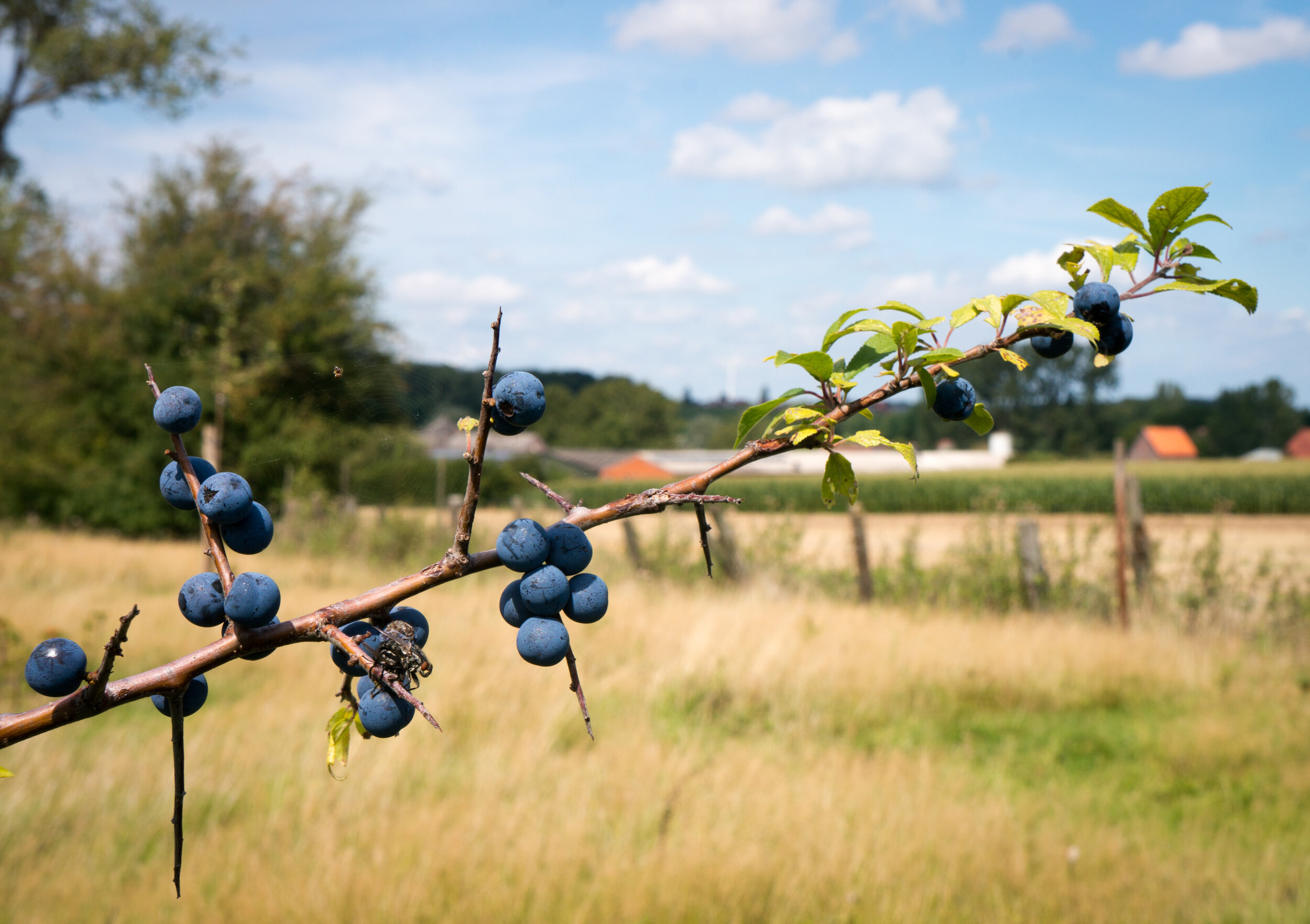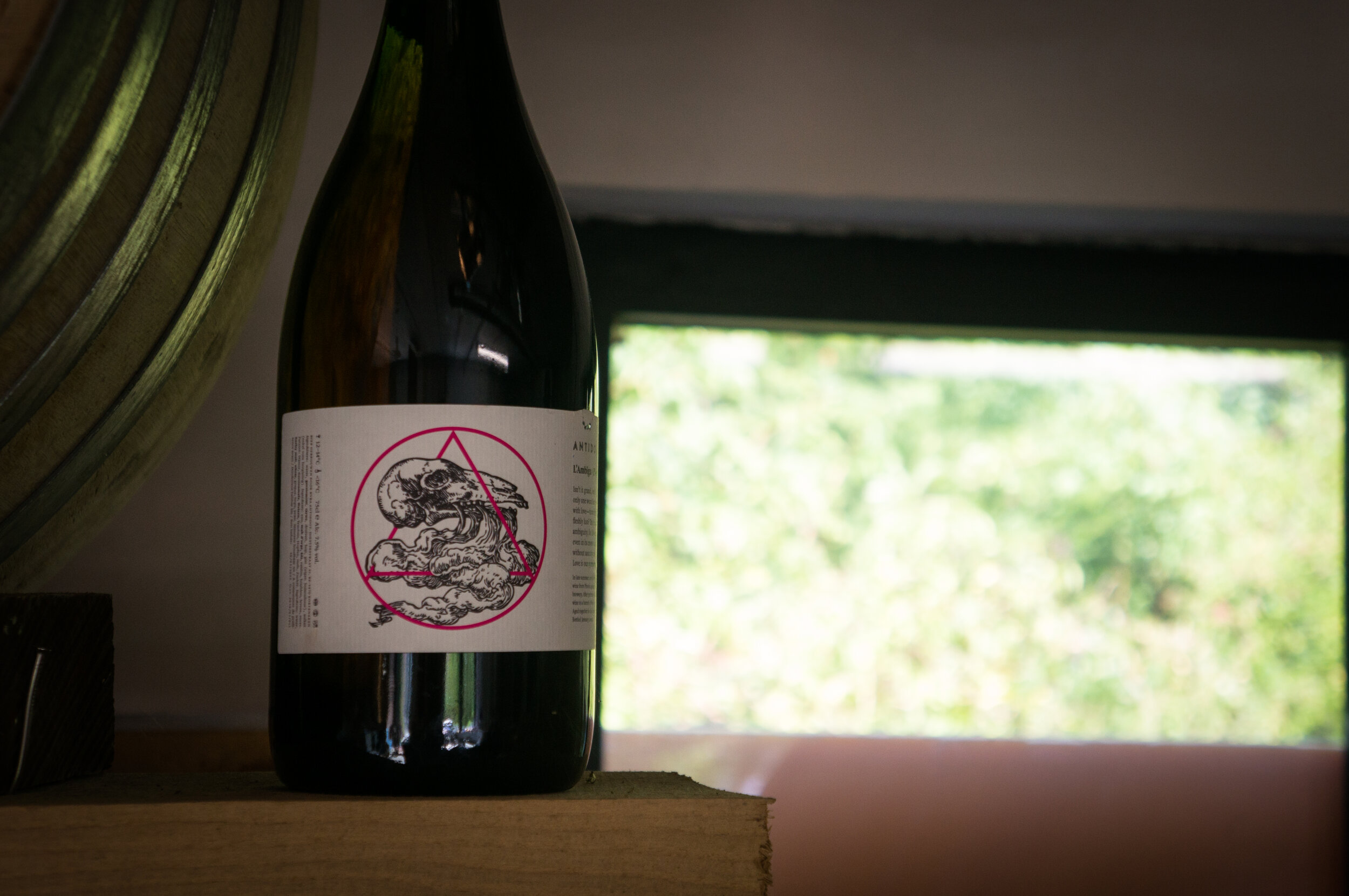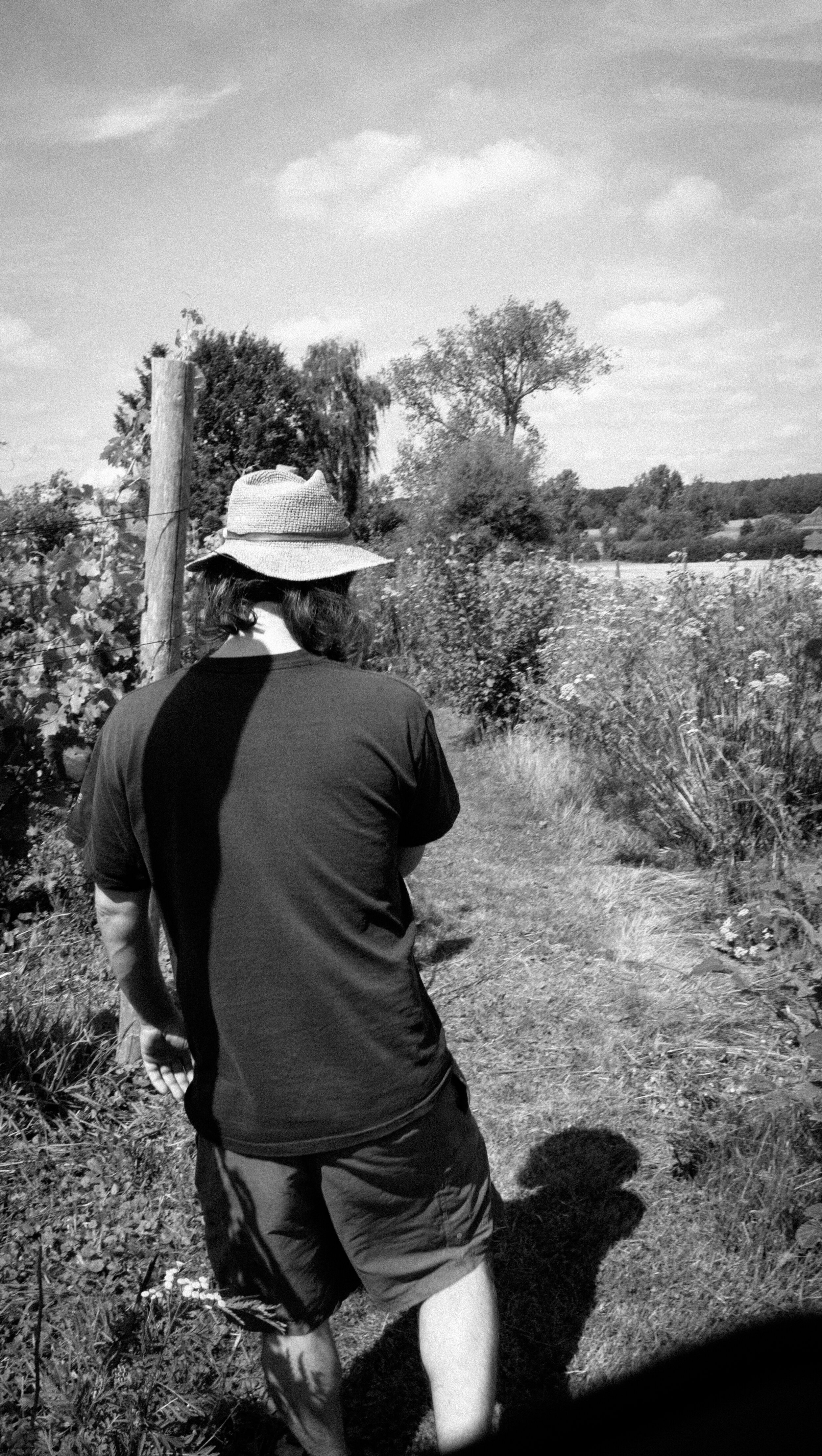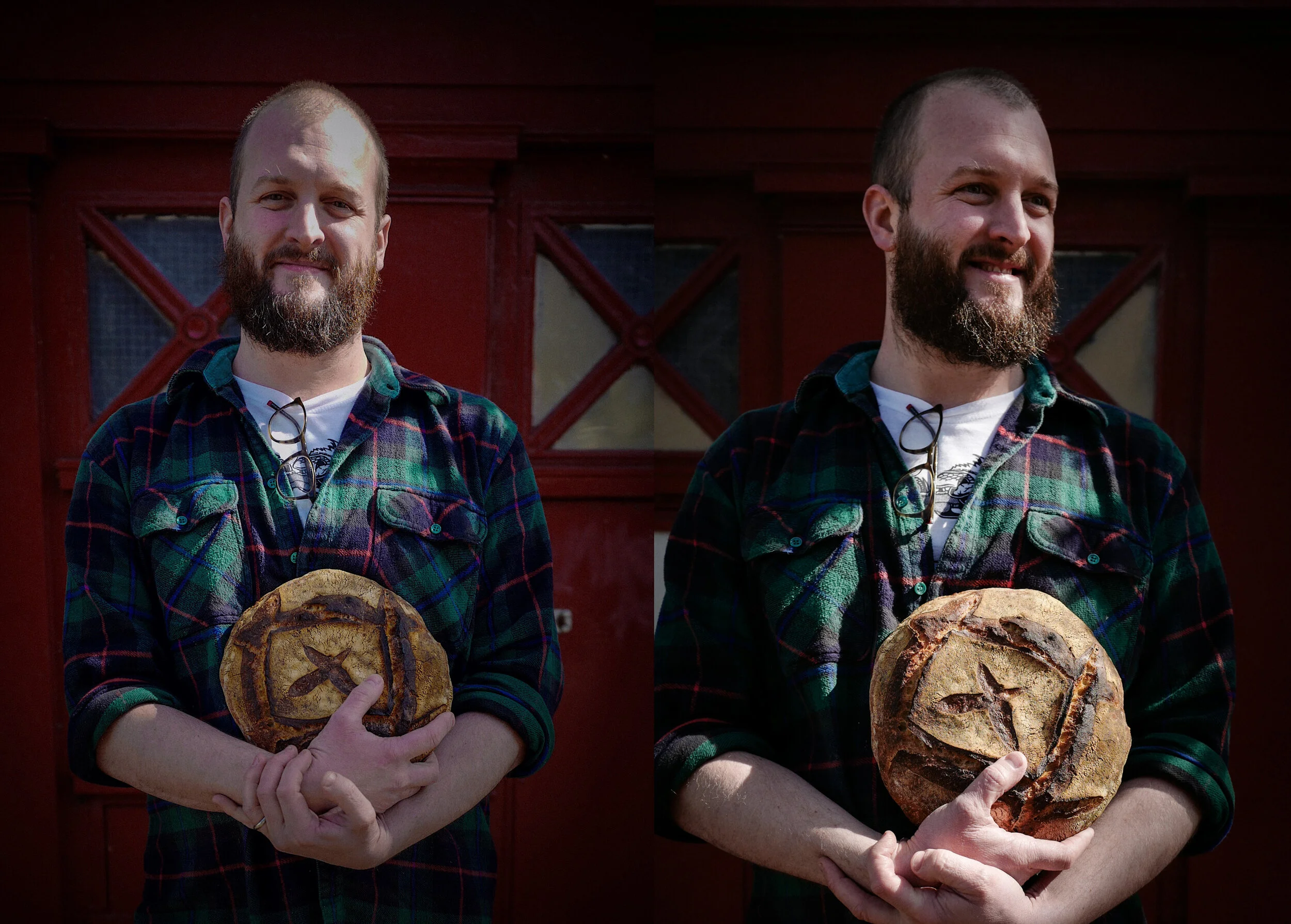Catastrophe and the Cure — Getting to Know Antidoot Wilde Fermenten in the Hageland, Belgium
Tom Jacobs needed a baseball bat.
In his previous job as a philosophy lecturer, he’d never needed one. But, on a farm in the Hageland—Belgium’s fruit-growing country—he stood in front of his first apple harvest, flummoxed. Cidermaking was supposed to be simple: you pick the apples, you press the apples, and you ferment the juice. But Tom had forgotten one vital step. “I didn’t know you had to crush them!” he laughs now, sitting at the dining table of his farmhouse, a decade on from that first, chastening experience.
Photography by Eoghan Walsh
Tom retired the bat and bucket but continued making homemade cider, alongside experiments with homebrewed beer and wine. In 2018 he and his brother Wim took their experience and translated it into Antidoot Wilde Fermenten, a ground-breaking Belgian experiment in brewing cider, beer, wine—and a delirious jumbled-up hybrid of all three.
***
Tom is sitting at the family dinner table of his tumbledown farmhouse, set back from a bend in the road into Kortenaken, a village in the Flemish Hageland region. Out in his garden, beyond the swings and slide set up for his two school-age children is a small vegetable garden, and beyond that pear trees are kept company by a gaggle of hardy Isle of Man sheep. The din of traffic is audible but it’s a distant, low rumbling; a far cry from Tom’s previous home on a Leuven inner-city ring road.
Having grown disillusioned with his teaching job, Tom and his wife moved to the countryside, embracing self-sufficiency. Making cider was a logical extension of their grow-your-own philosophy, which included a vegetable patch, tending to sheep, and solar-powered energy. There was, however, no local cidermaking tradition they could learn from, despite an abundance of apples. “In Flanders, even our customers don’t drink cider,” Tom says. “Many people said that our cider is the first cider they ever tried.”
Tom sources most of his apples from virtually abandoned apple trees in neighbourhood orchards. The apples from these trees are, as Tom says, “thicker [and] richer” than the blander varieties favoured by the region’s farmers for making apple juice. In addition, Tom visits Normandy to source apples that add depth, roundness, and tannins to his cider blends. There are now recently-planted English and French cider apple trees in his orchard, which now consists of 30 trees.
These apples, once pressed, are fermented and aged in wine barrels in the brewery. They are often infused with obscure herbs and botanicals—wormwood, common rue, angelica archangelica—grown in the family garden. Autonomia is one result, a cider so named because it is Antidoot’s first made exclusively with ingredients foraged or sourced from the farm. It is light, complex, and bone-dry. “Maybe what we bring out is too dry for some people, but that’s just what we like,” Tom says.
Autonomia was infused with wine made by Tom from his own Cabernet Jura grapes—a red wine grape variety originating from the Swiss Jura region—grown on low-slung grape vines set out in tidy rows in their back garden. Vines which Tom gets up from the table to inspect, his shoulder-length chestnut hair tucked in underneath his ever-present floppy wide-brimmed hat.
A vineyard was not in Tom’s original plan, but he was convinced to dive in after early, revelatory experiences with natural wine. “I still remember my first one,” he says. “I opened it and I said, ‘Hmmm, this smells like Cantillon—I know what this is!’” Tom later found himself in the Beaujolais—a grape-growing region that’s part of the broader Burgundy wine appellation—visiting Italian wine-maker Denny Baldin.
Tom describes Denny as “kind of a crazy guy, like an artist.” He spent the day exploring the vineyard and later eating, drinking, and talking copiously with Denny, leaving with a determination to emulate what he had seen. “It had completely changed my perspective on wine,” he says.
A committed autodidact, Tom eschewed professional training in favour of hand-me-down knowledge from wine producers he respected. Starting small, his little vineyard has since grown to 900 vines in short, neatly ordered rows between the pear trees and the vegetable garden. Hardy grapes including hybrid varieties like Cabernet Jura, and more traditional varietals like Gewürztraminer, were chosen to survive colder climates. Everything grown here is low-intervention but labour-intensive.
““When you start planting trees, it’s for the long term.””
As he navigates the rows of gnarled, stumpy vines, identifying the different varieties as he goes, Tom regularly kneels low to the ground, inspecting grapes and forcefully yanking out grass and flowers growing at their roots. He is vigilant for pests and moulds that have damaged previous harvests and, like all farmers, is vulnerable to weather shocks. “Last year, I would have said it was pretty easy because we had a very good harvest,” he says. “Everything was going well, the grapes were huge and not even a single grape was infected. This year is going to be totally different.”
The drawn-out heatwaves of summer 2019 and increasingly unpredictable weather patterns are amongst the reasons. “Conditions have been too extreme,” he says, picking up a bunch of mildew-scarred purplish Pinot Noir grapes, ripping them off the vine and throwing them into the bush.
***
Antidoot’s wine is not for sale—there’s just not enough of it. But working with his grapes and making wine has fundamentally changed Tom’s attitude toward running the business.
Antidoot is fully seasonal. The drinks he makes, and the rhythm of the brewery are dictated by the time of year: winter brewing, spring planting, summer bottling, autumn harvest, and back to brewing in the winter. These are not discrete processes at Antidoot; as they are made, beer, wine and cider are brought together, pulled apart, reshaped, and blended back into a kaleidoscopic mix that defies conventional taxonomy.
“We want to avoid style names,” Tom says, having moved from the vineyard into the brewery. “We want to come out with a style that doesn’t look too much like what else is going on.”
Bottles are labelled with striking logos—an animal skull emanating smoke on some, reinterpretations of 15th-century manuscript illustrations on others. Beers come with names like ‘Na de Val’ (After the Fall) or ‘Artemisia Absinthium,’ lines of poetry or philosophy, and a description of the beer’s production. Sometimes the beers are inoculated with Antidoot’s house yeast that was captured and cultivated by Tom; otherwise, they’re left to ferment spontaneously after a night in the first-floor coolship.
Tom and his brother are working to fine-tune their base beer, iterating and tweaking it to their taste. “I use the word saison when talking about [our base beer],” he says, referring less to strict stylistic definitions and more to the simple fact they brew seasonally, with varying combinations of wheat and malt.
If it’s an unconventional approach, the two-storey brick brewery itself is much like any other. On the ground floor are repurposed wine barrels, green bottles both full and empty, and Tom's improvised laboratory strewn with conical flasks and a bottle of day-glo orange wine. On the wall there’s what looks like a Blair Witch totem, a letter “A” made of twigs, and upstairs above the coolship is the bleached white skull of one of Tom’s deceased sheep mounted to a rudimentary wooden arch.
The brewery is studiously clean; Tom hates fruit flies, and any hint of a spill is quickly mopped up. Here, Tom and his brother are constantly working with their house yeast, encouraging it to keep unwanted flavours at bay. “I really hate acetic acid,” he says, and he’s not a huge fan of over-dominant Brettanomyces either.
Despite its heterodox approach, Antidoot, like all good Belgian breweries, values drinkability. “We want to end up with something drinkable,” he says, “But we just don’t have a fixed concept of how it should be.”
Fixed or not, Antidoot’s concept is wildly popular. Tom is preparing for a weekend bottle release; during their inaugural 2018 release demand was such that a three-day sale was truncated after they sold out on day one. “That was stressful, of course,” he says. “But it’s a luxury problem. The most frustrating thing is when you see that it gets out of hand.” He’s not encouraging the hype—he has instituted a one bottle per customer rule for the future—as it’s inimical to his philosophy.
But Antidoot’s pre-Pasteur, pared-back approach resonates with drinkers who fetishise authenticity, simplicity, and pre-modern brewing techniques. “It’s a typical reaction against the whole society which has become commoditised,” Tom says. Pulling from his philosophy background, he suggests this is a manifestation of “inter-passivity.” “It’s like watching an action movie. Instead of doing it yourself and getting your frustration out, we just watch a movie,” he explains. “And now, we just want to buy bottles that somehow symbolises this [approach to beer] more. Which is perverse.”
It’s a mood that Tom worries is sending brewing into a creative dead end. “Newness for the sake of newness. Just following just what works well on Untappd,” he says. But he’s self-aware enough to know even Antidoot can’t escape. “Of course we’re not really outside of it. It’s naïve to think of yourself as being outside it, but we just don’t directly mirror it.” He’s making an effort to reach outside of beer circles, to drinkers “not into these things because of labels and hypes,” he says, but “new flavours, or old flavours… something beyond a commodity.”
In any case, he’s too busy to lose too much sleep over rating sites like Untappd. Crossing the concrete-paved road outside the brewery, Tom ventures down a rutted dirt track into an adjoining field. White arrowroot flowers grow low on the ground, in the shadows of drooping sunflowers. Tom has rented this land to plant new grape varieties—Riesling and Red Riesling—alongside more new apple trees.
The field’s insect inhabitants buzz softly in the background. In the distance is the slate steeple of Kortenaken’s Sint Amor church, silhouetted against encroaching clouds. The church has deep roots in this village, its oldest parts date back 500 years. “We’re trying to do something for the long-term,” Tom says, bending down to clear foliage and let his saplings breathe. “When you start planting trees, it’s for the long term.”


























